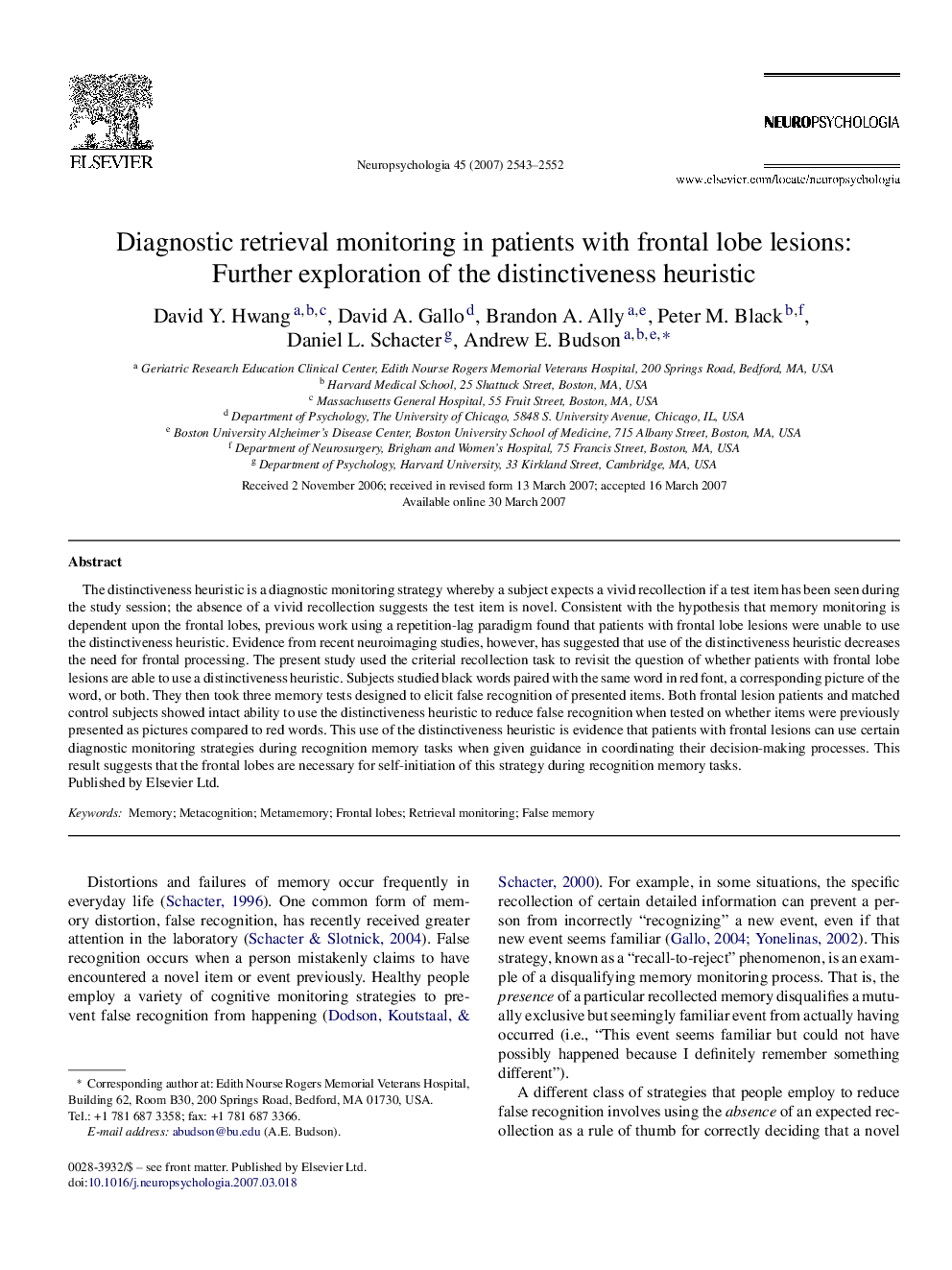| Article ID | Journal | Published Year | Pages | File Type |
|---|---|---|---|---|
| 945541 | Neuropsychologia | 2007 | 10 Pages |
Abstract
The distinctiveness heuristic is a diagnostic monitoring strategy whereby a subject expects a vivid recollection if a test item has been seen during the study session; the absence of a vivid recollection suggests the test item is novel. Consistent with the hypothesis that memory monitoring is dependent upon the frontal lobes, previous work using a repetition-lag paradigm found that patients with frontal lobe lesions were unable to use the distinctiveness heuristic. Evidence from recent neuroimaging studies, however, has suggested that use of the distinctiveness heuristic decreases the need for frontal processing. The present study used the criterial recollection task to revisit the question of whether patients with frontal lobe lesions are able to use a distinctiveness heuristic. Subjects studied black words paired with the same word in red font, a corresponding picture of the word, or both. They then took three memory tests designed to elicit false recognition of presented items. Both frontal lesion patients and matched control subjects showed intact ability to use the distinctiveness heuristic to reduce false recognition when tested on whether items were previously presented as pictures compared to red words. This use of the distinctiveness heuristic is evidence that patients with frontal lesions can use certain diagnostic monitoring strategies during recognition memory tasks when given guidance in coordinating their decision-making processes. This result suggests that the frontal lobes are necessary for self-initiation of this strategy during recognition memory tasks.
Related Topics
Life Sciences
Neuroscience
Behavioral Neuroscience
Authors
David Y. Hwang, David A. Gallo, Brandon A. Ally, Peter M. Black, Daniel L. Schacter, Andrew E. Budson,
